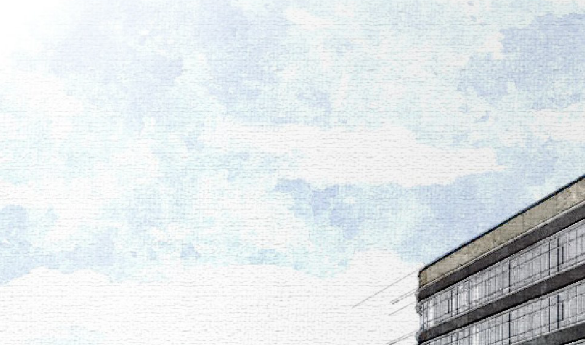New integrative research facility to house CHHS
The College of Health and Human Services will soon be housed in a new comprehensive building. The building, whose construction is set to begin in September 2014 on the Fairfax campus, will provide the foundations for a new health research facility that will contain classrooms, research labs and a community clinic.
“Not only are we training more nurses in this region than anybody else and also training masters in public health and other programs like that, but now we are also going to have a facility where we can offer some services to the community,” said President Ángel Cabrera. “Our students can practice. It’s great for their learning, and, at the same time, we are providing a service to the community.”
The new facility, tentatively titled Health and Human Services, will create a multidisciplinary learning environment for students in the college, according to Thomas Prohaska, the dean of CHHS. Undergraduate and graduate students, as well as instructional and research faculty, will be able to use classrooms, research labs and the clinic and will coexist with each other.
“The purpose is to have all three interchangeable,” Prohaska said. “Students will be learning in clinic settings and will be collaborating on research, and academic curriculum will be informed by clinic practice and research findings. So it’s a little bit more integrated than you might think. And it’s designed for that very purpose: to provide the full array of competencies in practice, research and academic competencies that are required of people in the health sciences. “
The building, which has been authorized by the university and is currently in concept phase, will unify CHHS, according to facilities administration’s website. Currently, CHHS’ central offices and classrooms are located in Robinson, but the departments are located in seven different buildings on the Fairfax campus, Prohaska said.
“We are spread out,” Prohaska said. “This will be the first time that we’ll be all together.”
The new building will replace what is currently the faculty lot next to University Hall.
“It’s on the edge of the campus and close proximity to downtown,” Prohaska said. “Which is important because the clinic is open to a broader group of patients and participants than just what you normally would think.”
The combination of classrooms, research and clinic allows for a more real-world approach to learning in CHHS, Prohaska said.
“We have six different departments or schools and two centers and within this we have disciplines that run the full gamut of health,” Prohaska said. “And with that, each one of them needs to be aware of their role in the healthcare arena and be able to coordinate the care. So one of the things that is new is that many of the kinds of training opportunities for students and faculty alike will be multidisciplinary in nature.”
With this multidisciplinary system, students will become better rounded. For example, a student with a nursing degree may also have a public health degree.
“We have purposefully tried to do more integration of some of the particular content areas and disciplines rather than be separated from each other,” Prohaska said.
The clinic will allow for an increase in community involvement and working with other industries, according to the facilities management website. Patients can be treated on multiple aspects of health because of the multidisciplinary approach, Prohaska said. The clinic will provide clinical trials, wellness checkups, flu shots and services lacking in the community to provide a holistic view of health.
“It’s a multidisciplinary, multifactorial kind of clinic where all things could happen,” Prohaska said.
According to Prohaska, on-site research is a necessary element of training people in CHHS because of the advancements in research in the health profession.
“If we were a health profession college without research, we would teach you exactly what we know now,” Prohaska said. “The life of your degree would be very much short as a function of that. We train you not only on what’s going on now, but we teach you how to be consumers of new advances in the field and the latest in that field to where you stay competitive for quite a while.”
The research aspect of the facility will allow for more research activity on campus, which matches the university’s strategic plan goal to have “very-high research activity” according to the Carnegie classification.
The current budget for the new building is $3,488,126, according to the facilities management website. Prohaska noted that private donations will aid the completion of the facility as well as determine the official name of the building.

